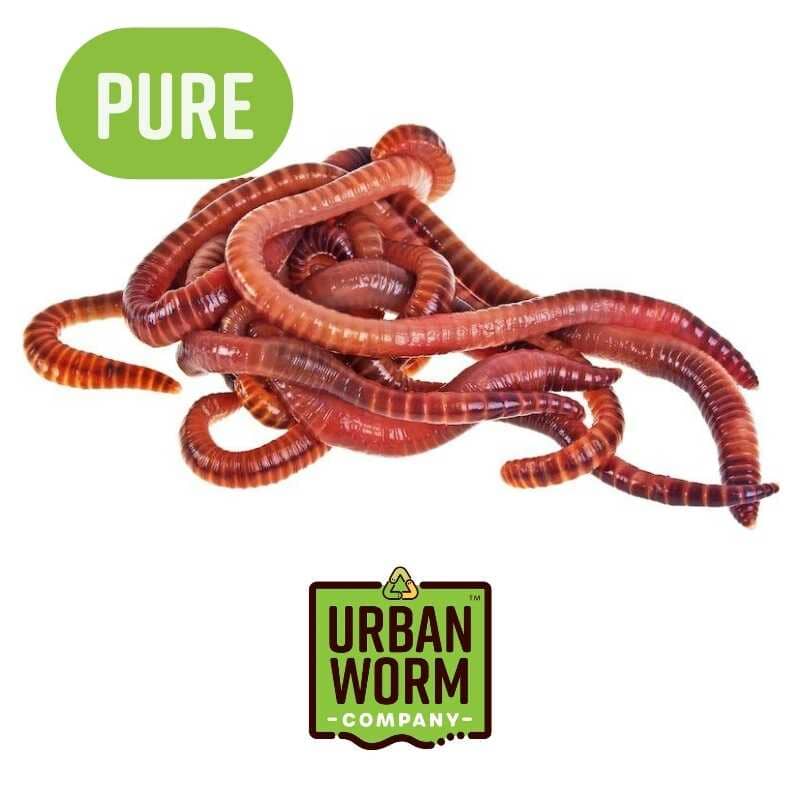The Ultimate Guide to Taking Care Of Red Wigglers in Your Garden
Caring for red wigglers in your garden is an essential part of sustainable composting methods that can dramatically enhance soil wellness and fertility. Recognizing their certain habitat demands, dietary choices, and upkeep demands is crucial for cultivating an efficient vermicomposting setting. As we check out the subtleties of setting up a helpful area and the most effective feeding techniques, the effects of these practices will come to be progressively apparent. The trip does not finish with basic care; there are innovative strategies that can better optimize your results, inviting a much deeper exploration right into the world of vermiculture.
Recognizing Red Wigglers

Red wigglers are identified by their reddish-brown pigmentation and segmented bodies, which can grow up to four inches in length.Understanding the ecological and biological requirements of red wigglers is crucial for effective composting. By fostering the perfect conditions for red wigglers, garden enthusiasts can improve soil fertility and promote sustainable gardening methods.
Establishing the Habitat
Producing an optimal environment for red wigglers is vital for maximizing their composting performance and total health and wellness. An ideal setting includes aspects such as dampness, bedding, and temperature products. Red wigglers prosper in a wet, dark atmosphere with a temperature variety of 55 to 77 degrees Fahrenheit. It is essential to monitor these problems carefully, as extreme temperature levels can impact their task and reproduction.
When picking a container, pick one that is well-ventilated to enable air blood circulation while preventing excess moisture loss. Plastic bins, wooden boxes, or specialized worm containers are all effective options. All-time low of the container need to have drainage openings to stop water accumulation, which might bring about anaerobic conditions harmful to the worms.
Routinely inspect the moisture level of the bed linens, and add water as required to preserve the suitable wetness. By developing these problems, you will certainly develop a thriving atmosphere for your red wigglers, encouraging efficient composting and much healthier worm populations.
Picking the Right Food
Choosing the appropriate food for red wigglers is crucial for their health and composting effectiveness. These worms thrive on a balanced diet that includes a variety of natural products. Ideal food sources include fruit and veggie scraps, coffee premises, crushed eggshells, and shredded paper. It is vital to avoid meats, milk products, and oily foods, as these can attract insects and develop unpleasant smells in the composting setting.
Red wigglers favor food that is chopped or shredded, as this boosts surface and advertises much more efficient digestion. Additionally, presenting food in little quantities stops overfeeding, which can lead to anaerobic problems detrimental to worm health. Checking the worms' consuming behaviors can additionally give understandings; if the food is taken in rapidly, consider progressively increasing the quantity.

Preserving Wetness and Temperature Level
A well balanced diet regimen is only part of the equation when it pertains to making sure the health and wellness of red wigglers; preserving proper wetness and temperature is equally essential. Red wigglers grow in a wet atmosphere, ideally between 70-85 ° F(21-29 ° C) This array sustains their metabolic processes and boosts their capacity to decompose raw material successfully.
To keep suitable dampness levels, the bed linens must be kept damp, looking like a wrung-out sponge. Insufficient moisture can cause dehydration, causing stress or also death in the worms. Conversely, excessive moisture can create anaerobic conditions, which might damage the worms and create unpleasant odors. Regularly examining the dampness web content and readjusting as essential is important for a thriving worm population.
To mitigate temperature extremes, think about utilizing insulation for outside containers or moving the bin to a shaded or temperature-controlled location. By meticulously taking care of both dampness and temperature, you produce an ideal environment for red wigglers, enhancing their productivity and overall wellness.
Harvesting Garden Compost and Treatment Tips
Collecting garden compost from your red wigglers is a satisfying procedure that not only benefits your garden yet additionally improves the efficiency of your worm container - Where to buy red basics wigglers. To start, select a harvesting method that fits your setup-- whether it's the tray, pyramid, or traditional container method. Each approach permits for the splitting up of garden compost from worms effectively
To my explanation collect, you can gently dig deep into the garden compost from one side of the container, permitting worms to migrate to the uninterrupted side. You can use light to urge worms to delve much deeper, making it easier to accumulate the finished compost.
Care suggestions after collecting consist of replenishing your worm container with fresh bed linen and food scraps to keep a healthy worm population. Ensure that the wetness and temperature level degrees remain ideal, and regularly check for any type of indicators of distress among the worms. By adhering to these techniques, you'll ensure a lasting cycle of compost production that enhances your garden.
Final Thought
In final thought, the effective treatment of red wigglers demands an extensive understanding of their habitat, dietary demands, and environmental conditions. Developing a suitable habitat with proper air flow and dampness degrees is important for cultivating their wellness and performance.
By developing these conditions, you will create a flourishing atmosphere for your red wigglers, encouraging efficient composting and healthier worm populations.
The pH level of the food is one more essential element; red wigglers thrive in a slightly acidic to neutral setting.A balanced diet is only part of the formula when next page it comes to making sure the wellness of red wigglers; keeping appropriate wetness and temperature level is just as crucial. By carefully managing both dampness and temperature, you produce an optimum atmosphere for red wigglers, boosting their performance and general wellness.
Harvesting compost from your red wigglers is a rewarding process that not only benefits your yard but likewise improves the efficiency of your worm bin.